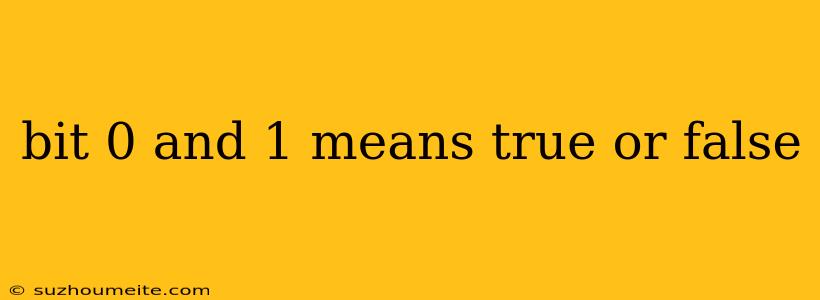Bit 0 and 1: The Foundation of Digital Information
In the realm of computers, information is represented not by words or images but by a series of bits, the smallest unit of data. A bit, which stands for binary digit, can exist in only one of two states: 0 or 1.
These seemingly simple values form the bedrock of how computers store and process information. The beauty lies in their ability to represent truth values—True and False.
Representing True and False
- 0 conventionally represents False.
- 1 conventionally represents True.
This binary representation allows computers to process complex logical operations. For instance, a logical AND operation between two bits would result in a True output (1) only if both input bits are True (1). Otherwise, the output would be False (0).
Beyond Truth Values
While bits primarily represent True or False, their significance extends far beyond these simple values. By combining multiple bits, computers can represent a wide range of data:
- Numbers: Each digit in a binary number is a bit. For example, the decimal number 5 is represented as 101 in binary (1 x 2^2 + 0 x 2^1 + 1 x 2^0 = 5).
- Characters: Using a code like ASCII, letters, punctuation marks, and other symbols are represented by unique combinations of bits. For example, the letter 'A' is represented by the binary code 01000001.
- Images: Each pixel in an image can be represented by multiple bits, with different combinations representing different colors.
- Sound: Audio signals are also digitized by representing the amplitude of the sound wave at different points in time using bits.
The Power of Binary
The seemingly simple concept of bits, with their ability to represent True or False, forms the foundation of the digital world. Their versatility allows computers to process and store information in a way that is both efficient and flexible. Understanding the power of bits is crucial for comprehending the workings of modern computers and the digital age we live in.
